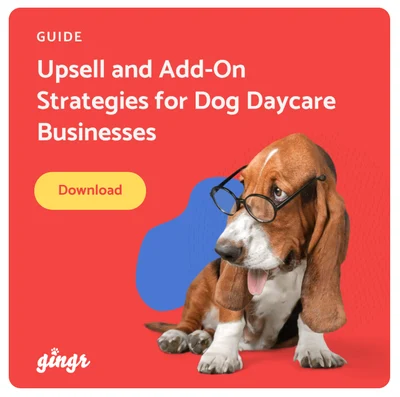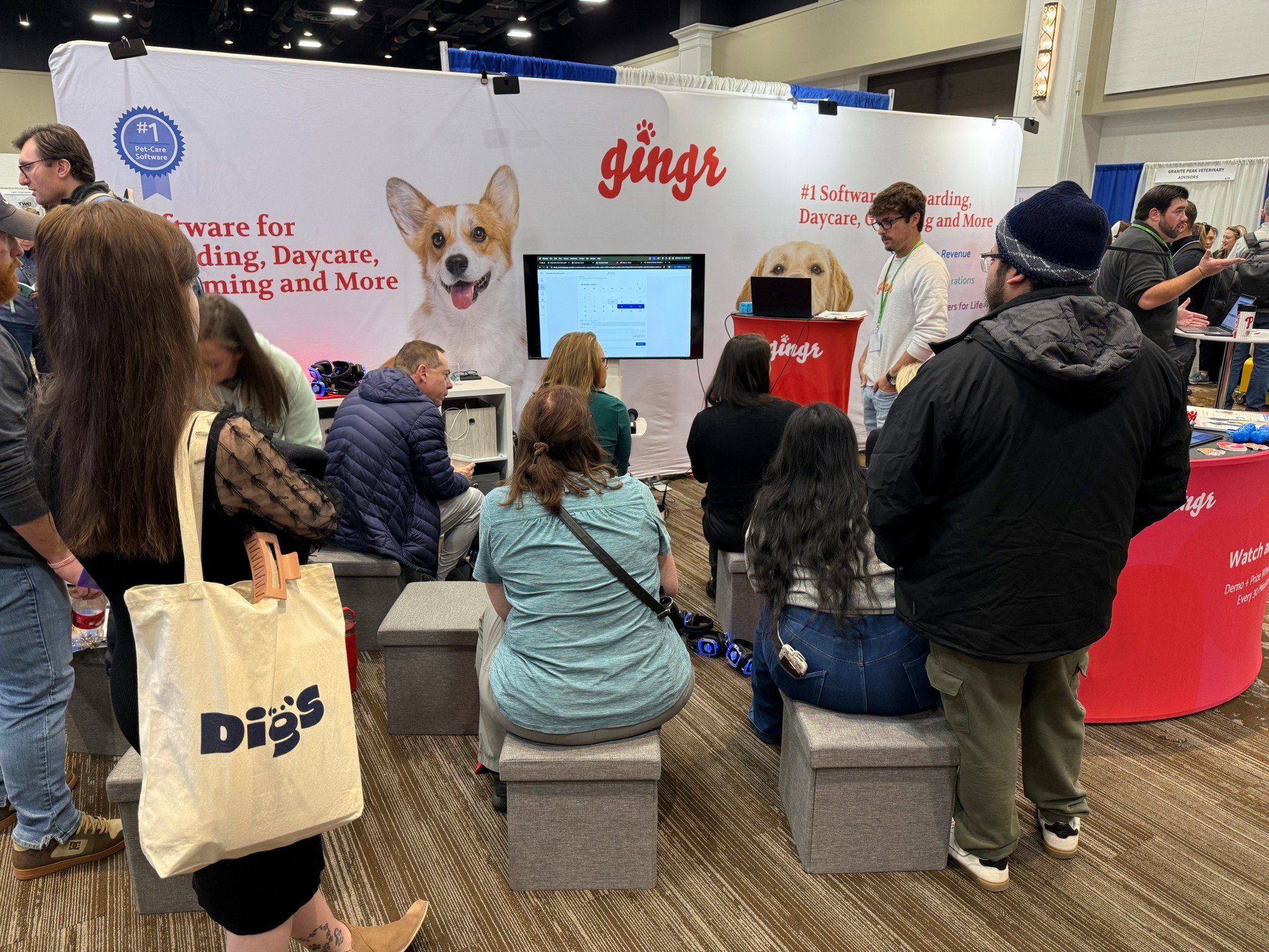They say you can’t teach an old dog new tricks… but how accurate is that, anyway? Are old-school methods hurting your bottom line? The most successful pet-care businesses are evolving—updating what matters while retaining their unique charm.
It’s completely normal to default to familiar routines, especially when they’ve “worked” for years. But growth rarely comes from doing things the same way. Modern pet parents expect speed, transparency, and convenience, and your team deserves tools that make great care easier, not harder. The goal isn’t to abandon your personality or community vibe; it’s to protect them by eliminating friction, waste, and risk. Adopt what helps, keep your charm, and let data—not habit—guide the next stage of your business.
With that in mind, here are 10 outdated practices, the hidden costs behind them, and modern upgrades that give you a measurable edge.

Paper Records and Clipboards
Estimated cost: Even a conservative ~3–5 hours/week in avoidable admin equals an estimated $216–$360/month in labor at $18/hr, per staff member. Multiply by your front-desk team, and this adds up quickly.
Why it’s bad: Writing down reservations, feeding instructions, or vaccination records by hand is bound to get cumbersome over time. Paper is easy to lose, hard to update, and impossible to share instantly across shifts.
Research on knowledge work has long shown that manual information hunting consumes a significant portion of the day. IDC and McKinsey findings estimate that searching and gathering time accounts for around one full workday per week!
Modern alternative: Cloud-based records in your pet-care platform. Digital solutions allow staff and clients to update information digitally, and vaccination expirations or feeding notes are accessible in seconds.
Phone-Only Bookings
Estimated cost: Requiring clients to call only during open hours to schedule or change appointments limits the amount of business you could get. For instance, miss five new bookings/week at $40 each, and you leave = $800/month ($9,600/year) on the table.
Why it’s bad: Consumers increasingly prefer 24/7 online scheduling across industries. In healthcare, for example, the National Library of Medicine reports that self-scheduled appointments made via automated technology result in lower no-show rates than bookings scheduled through a live person.
Modern alternative: Offer 24/7 self-service via Gingr’s Customer Portal (web) and the Gingr for Pet Parents app. It syncs directly with your system so you capture bookings even after hours.

Cash or Check Payments Only
Estimated cost: Taking only cash or checks, or using slow, legacy card terminals, is limiting and time-consuming. Add just five extra minutes to 20 daily checkouts, and you waste ~33 hours/month of staff time (≈ $600+/month at $18/hr), not counting lost tips or deposits.
Why it’s bad: Cashless behavior is now mainstream, particularly in our post-pandemic world. Pew Research found roughly 4 in 10 Americans make zero cash purchases in a typical week. Clunky checkout creates friction and kills upsell opportunities.
Modern alternative: Gingr Payments supports stored cards, deposits, contactless checkout, and in-person terminals, fully managed inside the pet-care business software.
One-Size-Fits-All Packages
Estimated cost: Many small businesses leave meaningful upsell revenue on the table; even a modest 10–15% lift in add-ons (enrichment, live-cam access, spa services) can be transformative over a year.
Why it’s bad: Pet parents expect personalization and clear value. Rigid tiers limit average order value.
Modern alternative: Build tiers and à la carte add-ons, and use your software’s pricing and packages tools to automate offers during booking and checkout.
Manual Check-In and Paper Waivers
Estimated cost: Just as using paper to jot down appointments can quickly become unorganized and inefficient, requiring pet parents to complete lengthy paper forms for each appointment slows down your workflow. For instance, a five-minute paper check-in × 20 clients/day = ~30+ hours/month (≈ $540+/month at $18/hr).
Why it’s bad: It slows the lobby, creates data entry errors, and frustrates repeat customers.
Modern alternative: Digital waivers and tools like Gingr PreCheck allow pet parents to fill out essential information and sign agreements ahead of their appointments. This frees up your staff's time, reduces manual work, and reduces lobby chaos.
Generic, Irregular Client Communication
Estimated cost: One-size-fits-all email blasts and little post-visit follow-up can erode customer relationships. If weak engagement results in a few percentage points of repeat business, the annual revenue impact can be in the tens of thousands for a mid-sized pet-care facility.
Why it’s bad: Consistency and responsiveness matter. On social alone, the Sprout Social Index shows 51% of consumers say the most memorable brand action is simply responding!
Modern alternative: Automate reminders, thank-yous, report cards, and promos. Keep conversations centralized via your online Customer Portal and email/SMS tools so no one slips through the cracks.

No Staff Training Program
Estimated cost: Informal shadowing or "throwing new team members to the wolves" creates a stressful environment for employees and pets. Replacing a single employee can easily cost thousands in direct and indirect costs; some analyses put total turnover at 50–200% of salary depending on role.
Why it’s bad: Inconsistent care and preventable mistakes. Hiring is expensive. SHRM notes the average cost-per-hire is about $4,700, and many employers estimate total hiring costs can reach several multiples of salary when you include onboarding and ramp time.
Modern alternative: Standardize onboarding with GingrU learning paths and trackable certifications to cut ramp time and improve consistency. Empower staff with the tools they need to do their jobs successfully — this goes beyond supplying clippers and combs!
Not Using Social Media Effectively
Estimated cost: Posting sporadically (or not at all) leads to inconsistent or confusing branding and communication. If prospective clients can’t see your work (happy pups! clean grooms! enrichment!) they’re more likely to choose a competitor they can evaluate online.
Why it’s bad: Social is your digital word-of-mouth, and responsiveness builds trust. Again, Sprout Social finds consumers value fast, genuine engagement, and in our ever-social world, responding to messages and comments on your digital channels is essential.
Modern alternative: Schedule simple, authentic content: behind-the-scenes reels, “pup of the week,” staff spotlights, and quick tips. Aim for about three consistent posts/week. Follow our quick tips to develop a "rinse and repeat" social media strategy that engages and informs.

Ignoring Data
Estimated cost: Without reporting, you can overstaff slow days, underprice popular services, and miss churn signals—easily a double-digit revenue drag over a year. Businesses using data-driven decision-making enjoy ~5–6% higher productivity on average, according to MIT.
Why it’s bad: Managing by gut instinct alone means opportunities for a revenue boost or operational improvements can slip through the cracks. Data clarifies pricing, staffing, and retention.
Modern alternative: Utilize business intelligence dashboards to track occupancy, average spend, repeat rate, and customer satisfaction. Make small, steady tweaks based on the evidence you analyze.
Minimize Hidden Costs with Helpful Changes
Remember: Change doesn’t mean losing the heart of your brand — it protects it. The hidden costs of staying “old school” can add up to tens of thousands of dollars per year in lost productivity and missed bookings. As you grow, your tools and methods should grow with you. This doesn't mean you have to overhaul your operations overnight (in fact, abrupt change can be disruptive). Start small, communicate well, and rely on your support channels to optimize operations.
Get the digital pet-care tools that get you. Book a demo with Gingr to run lean and maximize revenue!
Subscribe to the Gingr Blog








